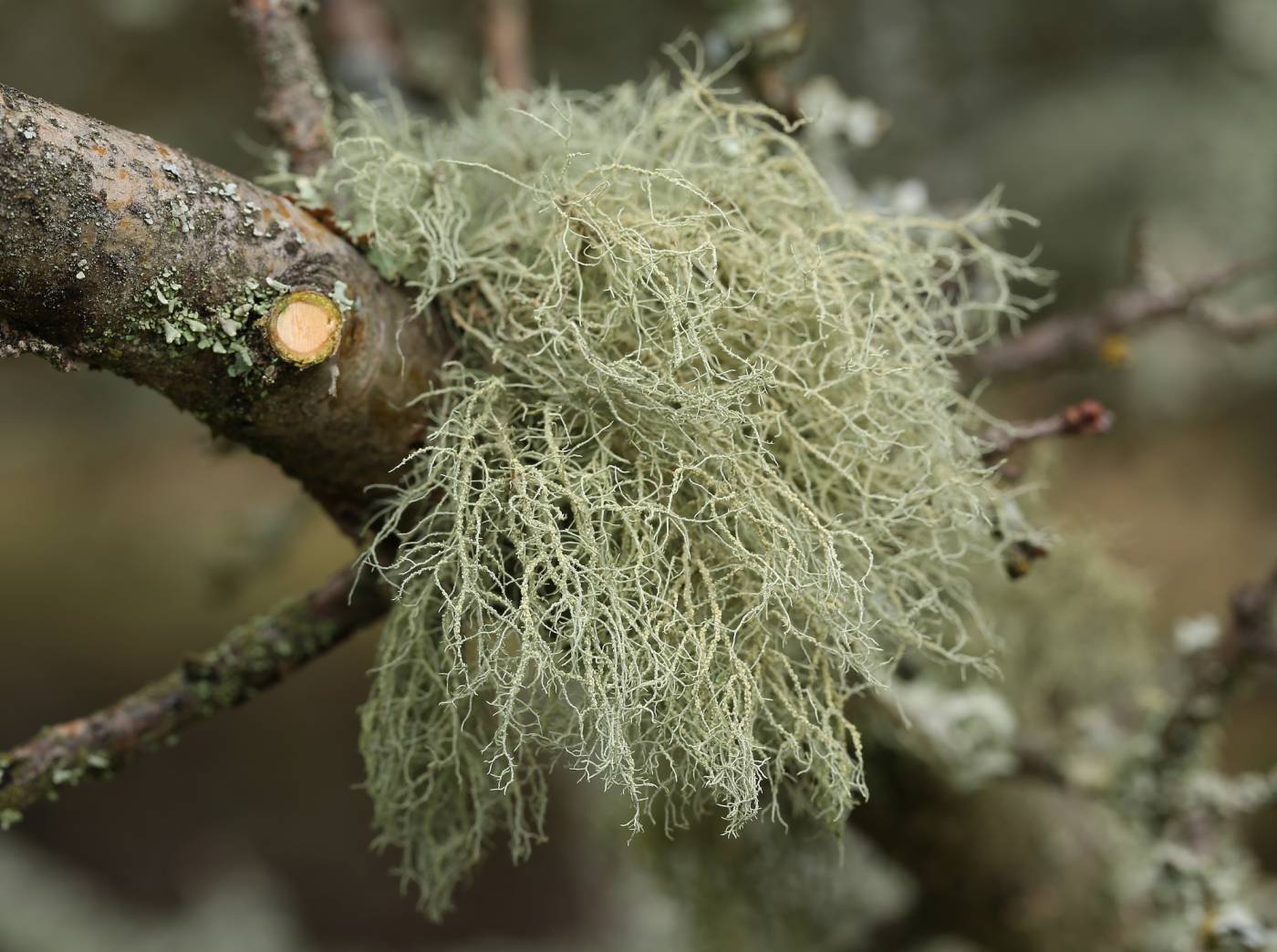The most common fruticose Usnea species with a black thallus base and isotomic-dichotomous branching. It is mainly distinguished by discrete isidiate soralia and the presence of thamnolic (K+ yellow, UV-) or squamatic (K-, UV+ white) acids in the medulla. The lichen is widely distributed in Europe. In the Czech Republic, it can be found scattered inside and outside the forests, on branches of coniferous and deciduous trees, mostly larch, blackthorn, spruce and beech, mainly in the western half of the area. It can rarely be lignicolous or saxicolous.
Based on neither chemistry nor molecular data, it cannot be distinguished from a similar U. florida, which is always fertile (see e.g., Degtjarenko et al. 2020). However, U. subfloridana can rarely form both soralia and apothecia. They represent young, recently diverged species and their distinction might require whole-genome studies.
Literature: Degtjarenko P., Mark K., Moisejevs R., Himelbrant D., Stepanchikova I., Tsurykau A., Randlane T. & Scheidegger C. (2020): Low genetic differentiation between apotheciate Usnea florida and sorediate Usnea subfloridana (Parmeliaceae, Ascomycota) based on microsatellite data. – Fungal Biology 124: 892–902.
taxonomic classification:Ascomycota → Lecanoromycetes → Lecanorales → Parmeliaceae → Usnea
Red List (Liška & Palice 2010):EN – endangered
Occurrence in the Czech Republic
All records: 141, confirmed 117. One click on a selected square displays particular record(s), including their source(s).
